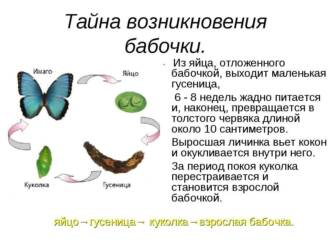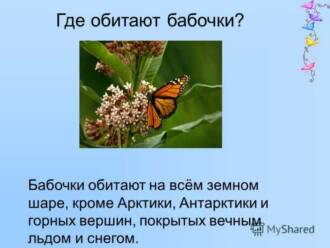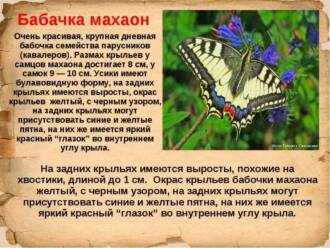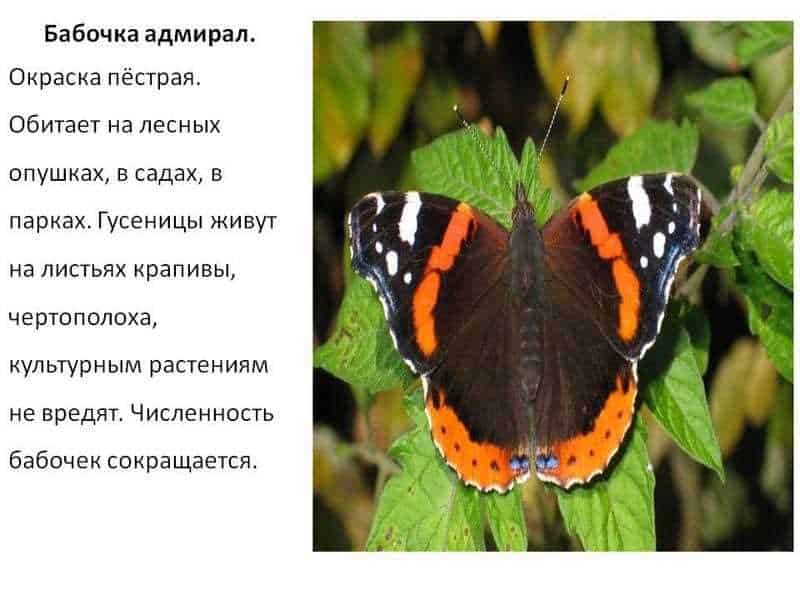
Butterflies are amazing creatures of nature that live almost everywhere. They live on all continents except Antarctica. Butterflies have their own preferences in choosing a habitat, and this depends on their species.
Most butterflies prefer to live in warm and sunny places such as meadows, fields and gardens. They can also live in forests, mountains and swamps. Some species of butterflies migrate over long distances, covering hundreds and even thousands of kilometers, to find suitable conditions for breeding and feeding.
What do butterflies eat? They mainly feed on the nectar of flowers. They use their long proboscis to suck the sweet juice from the flowers. Butterflies can also feed on fruit juices, rotten fruits, or nectar, and some species of butterflies even feed on pollen and tree sap. In addition, some species of butterflies feed on plant leaves, making them important for pollination and biodiversity conservation.
Butterflies are very important to the ecosystem as they help pollinate plants and distribute their seeds. Without butterflies, many plants would not be able to reproduce and survive.
Interestingly, in life, butterflies go through several stages of development, including eggs, caterpillars, pupae and, finally, adults - an adult butterfly. Each stage of development is unique and amazing in its own way.
Interesting facts about the life of butterflies
Butterflies are one of the most amazing creatures on earth. They have colorful wings and unique patterns that attract the attention of many people, especially children. Here are some interesting facts about the life of butterflies that will interest little explorers.
1. Variety of butterflies

There are about 20,000 species of butterflies on Earth, and each species has its own unique characteristics. They vary in size, wing shape, and color. Some butterflies have bright and colorful wings to scare off predators, while others have neutral colors and vegetal patterns to hide from danger.
2. Butterfly life cycle
Butterflies go through an amazing life cycle that includes four stages: egg, caterpillar, chrysalis and adult butterfly. Eggs are usually laid on plants and caterpillars emerge from them. Caterpillars feed on plants and gradually grow, then they form a chrysalis. A transformation takes place inside the chrysalis, and after a few weeks, an adult butterfly appears, ready to fly.
3. What do butterflies eat
Butterflies are insects and feed on a variety of plants and flowers. Each type of butterfly has its own food preferences. Some butterflies prefer the nectar they collect from flowers, while others prefer to feed on tree sap or fruit sap. Caterpillars, on the other hand, eat plant leaves, which are their main food source.
Where do butterflies live in nature

Butterflies are colorful insects that can be found almost everywhere on the planet. They live in a variety of places - from tropical forests to tundra and mountain pastures. However, most species of butterflies prefer to live in warm and humid areas where there are many flowers and plants.
Butterflies choose their habitats where they can find food and shelter. They often nest close to plants where they can easily find nectar and pollen. Butterflies can also inhabit forests, gardens, fields, and even city parks.
What do butterflies eat for children? Butterflies are mainly herbivorous insects. Adult butterflies feed on the nectar of flowers, which they collect with their proboscis. And the caterpillars, which are their larvae, feed on the leaves and stems of plants. Each species of butterfly has its own food preferences, so they choose places where their favorite plants are.
Features of butterfly habitats
Butterflies are one of the most beautiful and gentle creatures of nature. They live in a variety of places around the world, from rainforests to cold mountain peaks.
Butterflies prefer to live in diverse and unique environments. Some species prefer open spaces such as meadows and fields where they can enjoy bright sunlight. Other species prefer forest corners where they find shelter from predators and feast on pollen and flower nectar.
One of the important aspects of butterfly habitats is the presence of plants that serve as their food. Butterflies go through a process called metamorphosis, during which they change from an egg to a caterpillar, then to a pupa and an adult insect. Caterpillars feed on a variety of plants, such as leaves and flowers. When they turn into a pupa, they attach themselves to plants or other surfaces and remain motionless until they emerge as butterflies.
Butterfly habitats are rich in diverse plant species that offer them food and shelter. It can be a forest thicket with many trees and shrubs, a garden with flowering plants, or even a mountain slope with colorful flowers. Butterflies play an important role in plant pollination by carrying pollen from one flower to another, helping them reproduce and maintain their species.
What plants do butterflies prefer?
Butterflies are beautiful insects that live in different parts of our planet. Each butterfly species has its own unique feeding habits. Some butterflies prefer to feed on the nectar of flowers, others prefer the leaves of plants.
Many butterflies for children feed on the nectar of flowers. They are attracted by the bright colors and scents of the flowers. Butterflies fly up to the flower and spread their wings to get to the center of the flower where the nectar is. They suck it out with a long spout called a proboscis.
Some butterflies They feed not only on nectar, but also on the leaves of plants. Each species of butterfly has its own particular list of preferred plants. For example, cabbage butterflies feed on the leaves of cabbage and other cabbage plants. Butterflies-bloodsuckers feed on the juices of plants, piercing them with their proboscis and sucking out the juices.
If you want to attract butterflies to your garden, plant a variety of flowers that attract their attention. Some of them include juvenile, mallow, sunflower and lavender. You can also plant plants that are fodder for caterpillars. For example, parsley, dill and carrots are favorite food for butterfly caterpillars.
Butterflies and their role in the ecosystem

Butterflies are colorful insects that play an important role in the ecosystem. They are pollinators of plants, helping them to reproduce and maintain biodiversity. Most butterflies feed on the nectar of flowers, which is their main food source.
However, there are some types of butterflies that feed not only on the nectar of flowers, but also on other plant parts, such as leaves. For example, butterfly caterpillars feed on the leaves of various plants, which helps control their population and prevent over-reproduction.
Butterflies are also food for many animals such as birds, lizards and frogs. They form an important link in the food chain, providing food for other animals and helping to maintain the balance in nature.
Thus, butterflies play an important role in the ecosystem, providing pollination of plants and serving as food for other animals. Their colorful wings and unique looks make them not only beautiful, but also an integral part of nature.
How butterflies choose their breeding partner
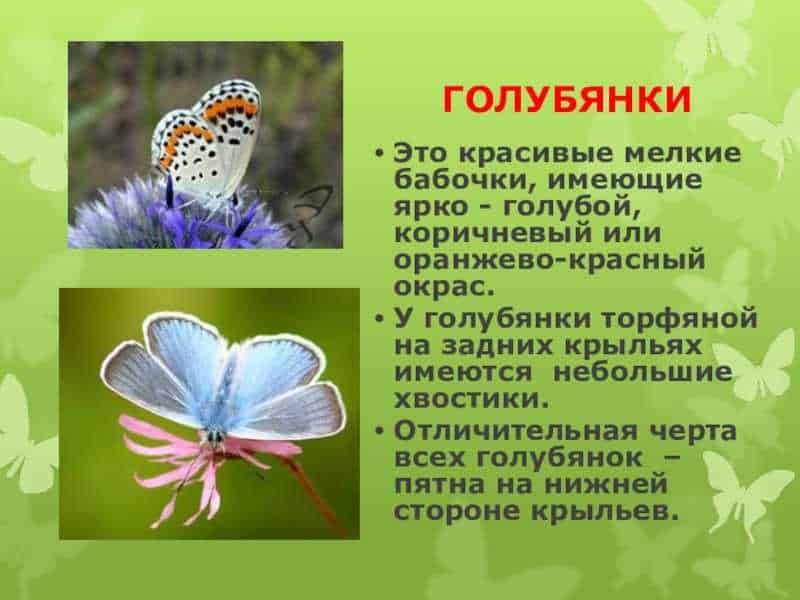
Butterflies, like many other animals, choose their breeding partner through special signals and behaviors. They use their senses to locate and attract potential mates. One of the main ways butterflies communicate is by smell. Butterflies secrete pheromones that help them attract a mate of the opposite sex. These pheromones can be different for each butterfly species, so they can only detect their own partner.
In addition to smell, butterflies can also use visual signals to attract a partner. They may have bright and colorful wings that attract the attention of other butterflies. This is especially important for species in which males and females have different wing colors. Such bright colors may indicate genetic quality information that may be important for mate selection.
In addition, butterflies can also use sound signals to communicate. They may make various sounds, wing friction or vibration to attract the attention of a partner and show their readiness for breeding. These sounds can only be heard by other butterflies, so they serve as a signal to the mate that they are ready to breed.
Thus, butterflies use various cues such as smell, color, and sound to select a breeding partner. These signals help them find a suitable partner among many other butterflies, and thus ensure the continuation of their species.
Some types of butterflies and their features
Butterflies are colorful insects that have unique characteristics. There are a huge variety of butterfly species in the world, each with its own characteristics.
Peacock-eyes
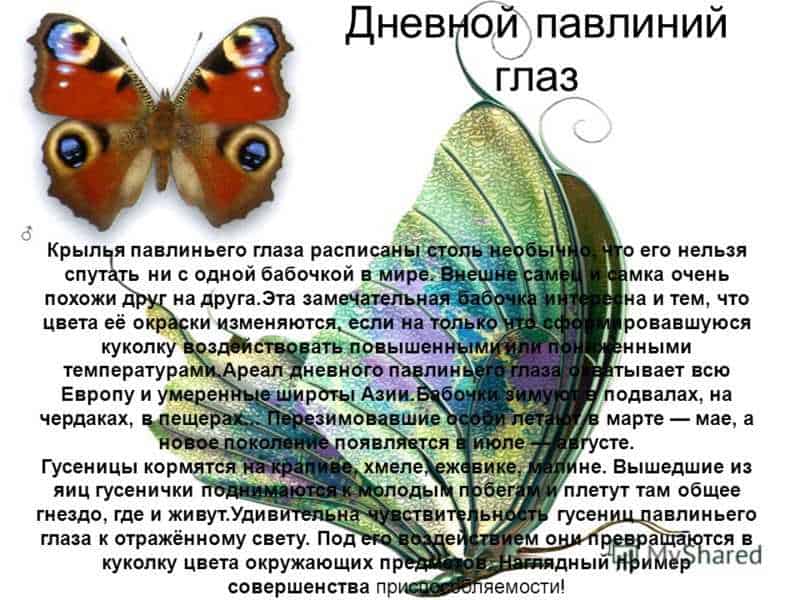
Peacock-eyes are one of the most beautiful butterflies. They got their name from the eyes on their wings, which resemble a peacock's tail. These butterflies usually live in tropical forests and feed on flower nectar.
Monarchs
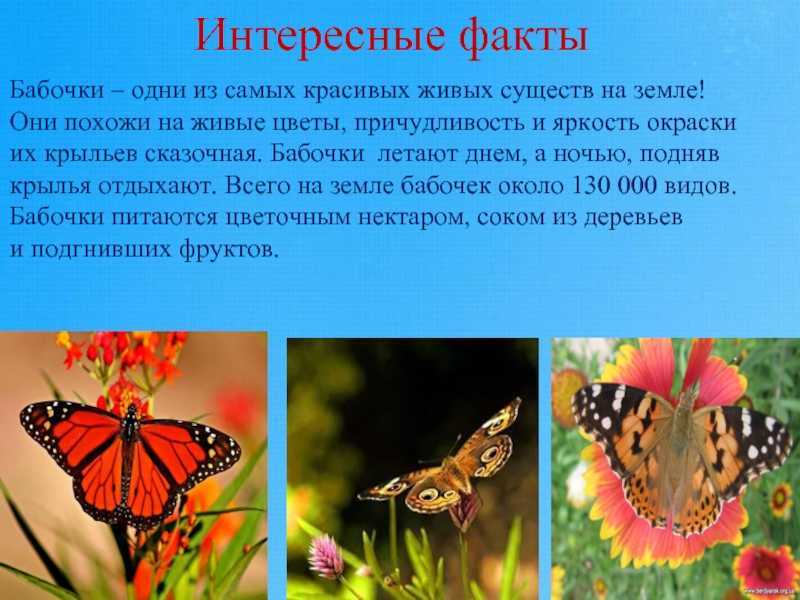
Monarchs are famous migratory butterflies. They make the long journey south each year to escape the cold winter. Monarchs feed on milkweed nectar and are one of the few butterfly species that can fly long distances.
Satin
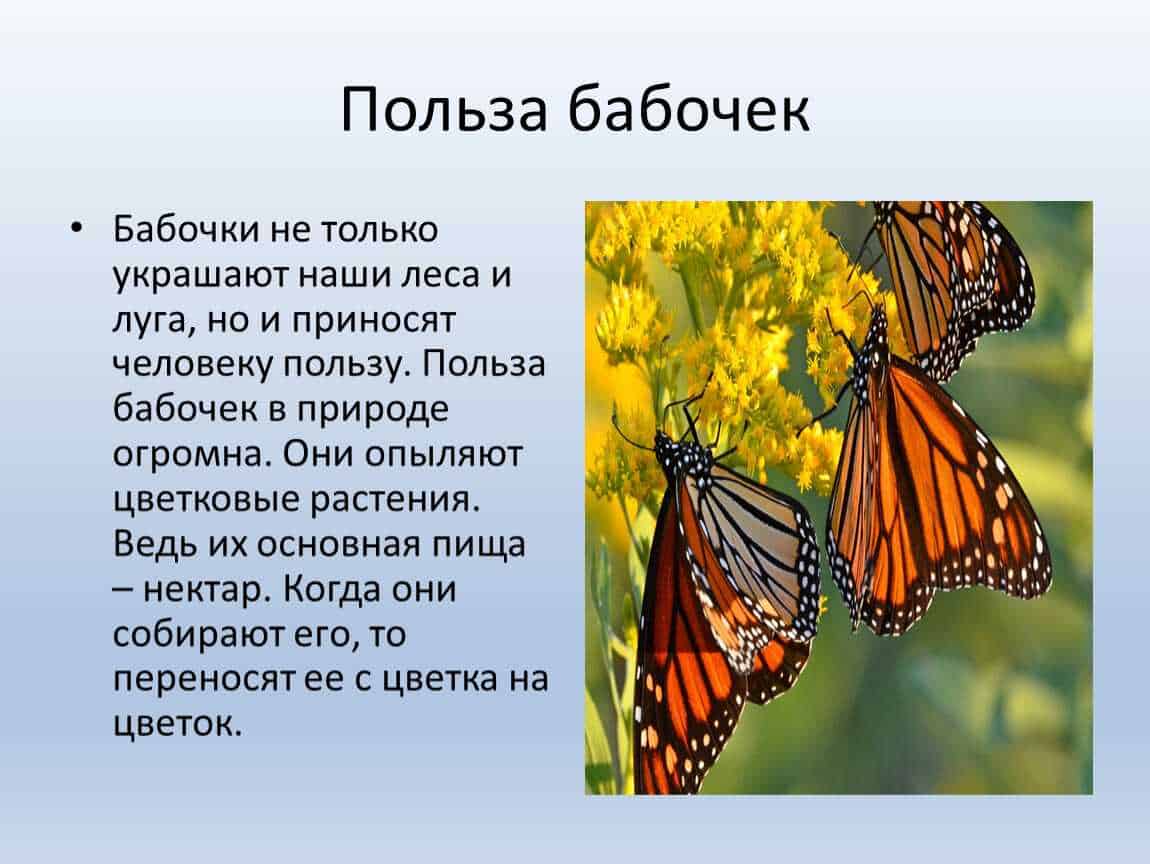
Satin butterflies are the largest butterflies in the world. Their wings can reach an impressive length of up to 30 centimeters. These butterflies live in the tropical forests of Southeast Asia and feed on fruit juice and plant sap.
Admirals

Admirals are butterflies with bright orange wings with black stripes and white spots. They are known for their ability to migrate long distances. Admirals feed on flower nectar and fruit juice.
So, butterflies are amazing insects that live in different places and eat different foods. Studying their diversity and features helps us better understand the natural world.



